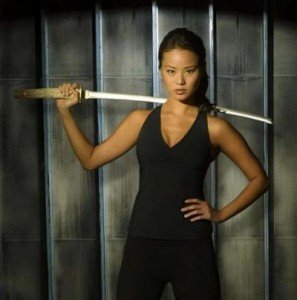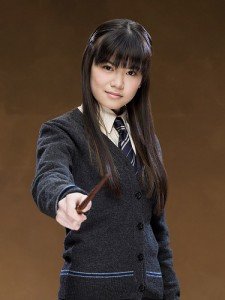Avatar: The Last Airbender Season1 Episodes 1-2
I watched the first four episodes of Avatar: The Last Airbender (ATLA) last year because my son’s girlfriend owns the first season and they urged me to watch it. We watched those first 4 episodes together, and then the watching with them lapsed and so I stopped watching even though I had enjoyed what I had seen so far. I am one who prefers to watch tv shows with other people so we can make comments as we watch and share observations.
I need to mention a few things:
1) I have three children, now all college age. ATLA’s three seasons ran from 2005 – 2008, which coincided with the end of their high school years, so these did not come up on my radar at that time, although I expect that was in large part because we don’t have cable so would have had to wait for it to come out on DVD regardless. By the time they were all in middle school I was in any case really burned out on children’s tv and films; it has taken me some years to even be open to viewing any again, as I came to pretty much loathe almost all of it. For years I had to take my kids to see films that bored me to tears or which I all too often really disliked for their male-centered reductionist vanilla-USA view of the world.
2) I will be riffing on the show as I watch it. I invite discussion. My criticisms do not constitute condemnation, just as the great things I enthuse about may not necessarily mean I think it perfect (forex, I liked both Firefly and Buffy a great deal, but I have criticisms of both shows). I do not expect to follow a consistent pattern in what I talk about. I will raise points that interest me in the moment. Those interested in discussing the show, please respond however you wish; don’t feel constrained by the points I raise. If you have other points you want to raise, then do so. Just, please, NO SPOILERS. Those of you who are superior to me in being able to tolerate spoilers, just please humor me in this. Spoil the eps I’m discussing and all those previous as much as you wish, just not future eps. Thanks.
3) I pretty much consider The Wire my favorite show ever shown on television (that I’ve seen, obviously). I’m approaching ATLA as an adult viewer with adult expectations and adult tastes, but with an understanding that the show is written for a children’s audience. I don’t expect to find in ATLA certain of the things I most loved about The Wire, but at the same time I do have expectations, from everything I’d been told and read, that this is a superior piece of storytelling that stands on its own and does not need the caveat “good for a kids’ show.” That is, I expect I will be watching a good story, period. Given that there are three seasons to play with, I would not be surprised to see some pretty sophisticated narrative unfold. We’ll see.
4) I plan to try to post every Wednesday night my time, which means Thursday in the rest of the world. I hope to review and discuss two episodes per week, if I can manage it. After the end of Season 1, I may take a short break before beginning Season 2, and the same for Season 3.
5) I wish I had done this when I watched Season 1 of Legends of the Galactic Empire with my son, Twin A. Oh well.
I will not at first talk much about the setting and the plethora of Asian, African, and Arctic-inspired people and places. ATLA is well known for its depiction of a world that is truly diverse, and I’m just going to take that as a given for the moment. I may comment on it as the mood takes me, but let me just note straight out here that, especially considering the recent sad regression toward bland Hollywood white male normativity, ATLA stands as a beacon. (The film was obviously an aberration that missed the point of the show entirely on many levels, so I’ll not mention it again.) Given ATLA’s commercial success, I can only hope that it will stand as a harbinger of things to come, a promise of steady change and expansion in the diversity of what is on offer to our increasingly diverse country as well as the countries to which programs made in the USA are exported. To get political for a moment, the weird and troubling retreat toward homogeneity pushed both by Hollywood and by some sections of the American population and political establishment is not just swimming against the tide of demographics, history, and social change but is actively deleterious to the health of our culture. So, in that sense, ATLA strikes me as an important piece in our ongoing cultural evolution.
Episodes 1 and 2 function as a set, a two part introduction to the world, the characters, and the story. This go round I watched with my daughter. Her comments will be prefaced with Rhi.
The opening is narrated by practical, level-headed Katara, a girl (I’m assuming she is about 13) of the water bending tribe who lives in or around the south pole of this planet; she’s ambitious, though–she wants to be taught how to waterbend, and no waterbenders remain in her tribe to teach her. She has an older brother, Sokka, who is 14 or 15 and often annoying and impulsive but also brave and loyal. Their mother is dead, killed in a Fire Nation raid, and their father and all the adult men in the village have gone overseas to someplace in the Earth Kingdom to fight against the invaders.
The story opens with brother and sister out fishing among the ice floes. The degree to which Sokka as a teen boy can be annoying (and making himself the center of attention) is constantly undercut and/or emphasized with humor. In fact, I’ll come back to that point later, because humor is consistently used to leaven and heighten the way the narrative unfolds.
The basic premise: There are four elements, water, earth, fire, and air. “Benders” can manipulate those elements. The “avatar” can manipulate all four. In the last 100 years the Fire Nation has advanced a program of steady conquest, including wiping out (as far as anyone knows) all the people of the Air Nation. The last avatar was said to be an airbender.
Katara and Sokka finds a 12 year old boy encased in an iceberg. As Rhi said, “Best release of a legendary hero ever: through sibling arguing!”
Over the course of eps 1 and 2 it is revealed that our boy Aang is the last airbender, the avatar who is the last hope for humanity to halt the conquest of the Fire Nation. We’re also introduced to Prince Zuko of the Fire Nation, his Uncle Iroh, and Zuko’s quest to prove himself by finding and capturing the avatar.
I could do more of a plot synopsis, but I’m not interested in discussing that for this first entry. I want to talk about the exceptional job the writers have done with introducing the world smoothly, quickly, and clearly.
I do big ticket world-building, so I know what I’m talking about. This is really well done. It’s a simple set up that leaves a huge amount of room for later complexity.
The writers introduce exactly as much as you need to know in each scene. Each scene is framed around either a humorous episode or a piece of action that will forward the story but which also reveals something of the basic situation in the world. The viewer never gets piled on with two much information. There’s a fair amount of “tell” but it’s short, to the point, and handled with absolute clarity of explanation. When the degree of information load starts hitting critical, the story breaks for something as seemingly trivially entertaining as penguin sledding. Which is then used to transition the narrative movement into another scene where more world and character building takes place. When the tone grows serious, humor breaks the mood (the little boy saying “I have to pee”), or helps to focus how the viewer is pulling in information.
These first two ATLA episodes are, to my mind, a textbook example of how to introduce a world, characters, and story. The basis for greater complexity is absolutely there but anything that isn’t necessary for the initial introduction is left for later.
The character building at this point is fairly basic without being shallow, but for this entry I don’t have much to say about that. Aang’s crush on Katara is sweet and, together with his youth, goofiness, and mistakes, helps to humanize a boy who is otherwise ridiculously too powerful; humor also is consistently used to undercut and make manageable Aang’s super power. Zuko is properly angsty, and of course I adore Uncle Iroh, a classic example of the man pretending to be a bit of a fool who obviously is a deep strategist. Although Aang is the avatar, Katara and Sokka are, to my mind, really the anchor that holds the story together, and they’re both necessary in ways that I may try to discuss later. Aang’s destiny is to a degree known, but Katara and Sokka have just started journeys whose outcome can’t yet be predicted.
And that, I think, is where I’ll end this quite long entry: After seeing the first two episodes of ATLA, I cannot in fact predict what the path is going to look like. And that’s pretty impressive.







